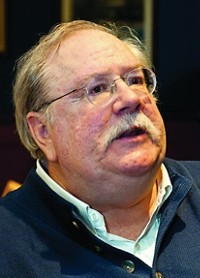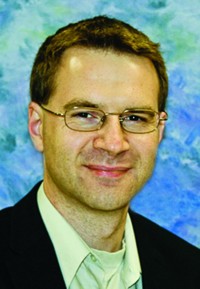Advertisement
Grab your lab coat. Let's get started
Welcome!
Welcome!
Create an account below to get 6 C&EN articles per month, receive newsletters and more - all free.
It seems this is your first time logging in online. Please enter the following information to continue.
As an ACS member you automatically get access to this site. All we need is few more details to create your reading experience.
Not you? Sign in with a different account.
Not you? Sign in with a different account.
ERROR 1
ERROR 1
ERROR 2
ERROR 2
ERROR 2
ERROR 2
ERROR 2
Password and Confirm password must match.
If you have an ACS member number, please enter it here so we can link this account to your membership. (optional)
ERROR 2
ACS values your privacy. By submitting your information, you are gaining access to C&EN and subscribing to our weekly newsletter. We use the information you provide to make your reading experience better, and we will never sell your data to third party members.
Synthesis
Waugh, Marks Win Big Prizes
Honors: John Waugh takes Welch award, Tobin Marks nabs Dreyfus Prize
by Mitch Jacoby and Amanda T. Yarnell
May 16, 2011
| A version of this story appeared in
Volume 89, Issue 20
Two chemists received prestigious awards last week. For his pioneering work in nuclear magnetic resonance spectroscopy, MIT’s John S. Waugh won this year’s Welch Award in Chemistry. And for his wide-ranging contributions to catalysis, Northwestern University’s Tobin J. Marks nabbed the 2011 Dreyfus Prize in the Chemical Sciences.
The $300,000 Welch Award is given annually by the Houston-based Welch Foundation. The $250,000 Dreyfus Prize is awarded biennially by the New York City-based Camille & Henry Dreyfus Foundation.
Waugh, 82, is best known for figuring out how NMR—which until the late 1960s was largely restricted to interrogating solutions—could be extended to solids. “He took what was a very useful tool for studying small molecules in solution and greatly expanded its possible applications to a range of solid materials that can’t be studied effectively by any other method,” notes James L. Kinsey of Rice University, who chairs the Welch Foundation’s Scientific Advisory Board. Solid-state NMR has since provided a window into the structure of proteins, membranes, viruses, and other large biomolecules.
Waugh dipped his toe in the then-nascent field of NMR as a graduate student at Caltech in the 1940s. “The word NMR had not even been invented yet,” Waugh says. Still, he adds, it was “clear that the technique might have chemical applications.”
Waugh proved this point by building his own NMR spectrometer and using it to nail down the then-controversial structure of the bifluoride ion.
After landing a faculty job at MIT, Waugh went on to show how to use combinations of external fields to sharpen the NMR spectra of solids, which are typically broad and diffuse. He also developed a theoretical explanation of the strategy, known as average Hamiltonian theory.
He later developed a method that dramatically increased NMR’s ability to detect rare nuclei such as carbon-13.
Marks, 67, has spent his career developing new industrial catalysts as well as determining their structures and mechanisms. Marks’s efforts to make catalytic processes greener and more efficient are “essential to sustaining our environment,” says Marye Anne Fox of the University of California, San Diego, who chairs the Dreyfus Scientific Affairs Committee.
For example, his group has developed lanthanide and actinide catalysts that mediate hydrosilation, hydroalkoxylation, hydroamination, and hydrothiolation reactions. These novel catalysts are also being studied for use in polymerization reactions. The team also focuses on ways of using green solvents, including ionic liquids, as media to carry out these transformations.
His group also made bimetallic polymerization catalysts that are more active and selective than standard polymerization catalysts. In some cases, these catalysts were shown to be more than twice as active and three times more selective than standard polymerization catalysts.
In addition, Marks has devised ways to anchor group IV metallocene-based catalysts on surfaces to enhance their activity, ease their separation from products, and make their recycling less costly. Typically restricted to solution-phase reactions, these catalysts are used to polymerize olefins and hydrogenate benzene.






Join the conversation
Contact the reporter
Submit a Letter to the Editor for publication
Engage with us on Twitter